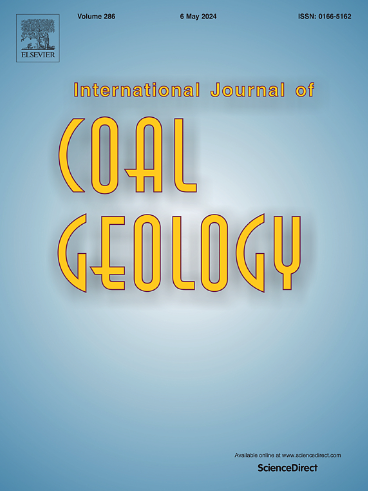Enrichment of Ni-Zn-Cd-Mo-V in the Şırnak asphaltites, Türkiye: The effects of organic matter, sedimentary processes, and hydrothermal fluids on element concentrations and occurrences
IF 5.7
2区 工程技术
Q2 ENERGY & FUELS
引用次数: 0
Abstract
There are numerous asphaltite veins in southeastern Anatolia, Turkey. The Avgamasya, Anılmış, Harbul, Silip, and Üçkardeşler veins, which are the focus of this study, are enriched in elements such as As, Cd, Mo, Ni, Sb (except in Harbul), U, V, Zn, and Hg. Commonly detected minerals across all samples include dolomite, calcite, apatite, pyrite, sphalerite, alkali feldspar, quartz, illite, and iron oxides. Additionally, smectite, barite, celestine, ilmenite, galena, hematite, rutile, and strontianite were also observed. The mineral matter present can be both syngenetic and epigenetic. The microcrystalline minerals present within solid bitumen may have precipitated from supersaturated fluids during the maturation of hydrocarbons. In contrast, epigenetic minerals may have originated from hydrothermal fluids after the solid bitumen was formed or may have been incorporated from the surrounding host rocks during the hydrocarbon migration process. Organisms in the shelf environment likely played a crucial role in the enrichment of these elements. Sedimentary and diagenetic processes, sediment pore waters, and hydrothermal fluids may have significantly contributed to the formation of minerals that host these enriched elements. Solid bitumen, iron oxides, pyrite, and sphalerite can serve as major carriers of these enriched elements. Meanwhile, lithophile elements such as Sr, Ba, and Na are typically found in minerals like barite, strontianite, celestine, calcite, apatite, and fossil shells.
新疆Şırnak沥青岩中Ni-Zn-Cd-Mo-V富集:有机质、沉积过程和热液流体对元素浓度和赋存状态的影响
土耳其安纳托利亚东南部有大量的沥青矿脉。本次研究的重点是Avgamasya、Anılmış、Harbul、Silip和Üçkardeşler矿脉,这些矿脉富含as、Cd、Mo、Ni、Sb (Harbul除外)、U、V、Zn和Hg等元素。在所有样品中检测到的常见矿物包括白云石、方解石、磷灰石、黄铁矿、闪锌矿、碱长石、石英、伊利石和氧化铁。此外,蒙脱石、重晶石、天青石、钛铁矿、方铅矿、赤铁矿、金红石和锶铁矿也被观察到。存在的矿物可以是同生的,也可以是表观成因的。固体沥青中的微晶矿物可能是烃类成熟过程中过饱和流体析出的。表生矿物可能是固体沥青形成后热液形成的,也可能是油气运移过程中从围岩中吸收的。陆架环境中的生物可能在这些元素的富集中发挥了至关重要的作用。沉积和成岩过程、沉积物孔隙水和热液流体可能对承载这些富集元素的矿物的形成有重要贡献。固体沥青、氧化铁、黄铁矿和闪锌矿是这些富集元素的主要载体。同时,亲石元素如Sr、Ba和Na通常存在于重晶石、锶矿、天青石、方解石、磷灰石和化石贝壳等矿物中。
本文章由计算机程序翻译,如有差异,请以英文原文为准。
求助全文
约1分钟内获得全文
求助全文
来源期刊

International Journal of Coal Geology
工程技术-地球科学综合
CiteScore
11.00
自引率
14.30%
发文量
145
审稿时长
38 days
期刊介绍:
The International Journal of Coal Geology deals with fundamental and applied aspects of the geology and petrology of coal, oil/gas source rocks and shale gas resources. The journal aims to advance the exploration, exploitation and utilization of these resources, and to stimulate environmental awareness as well as advancement of engineering for effective resource management.
 求助内容:
求助内容: 应助结果提醒方式:
应助结果提醒方式:


